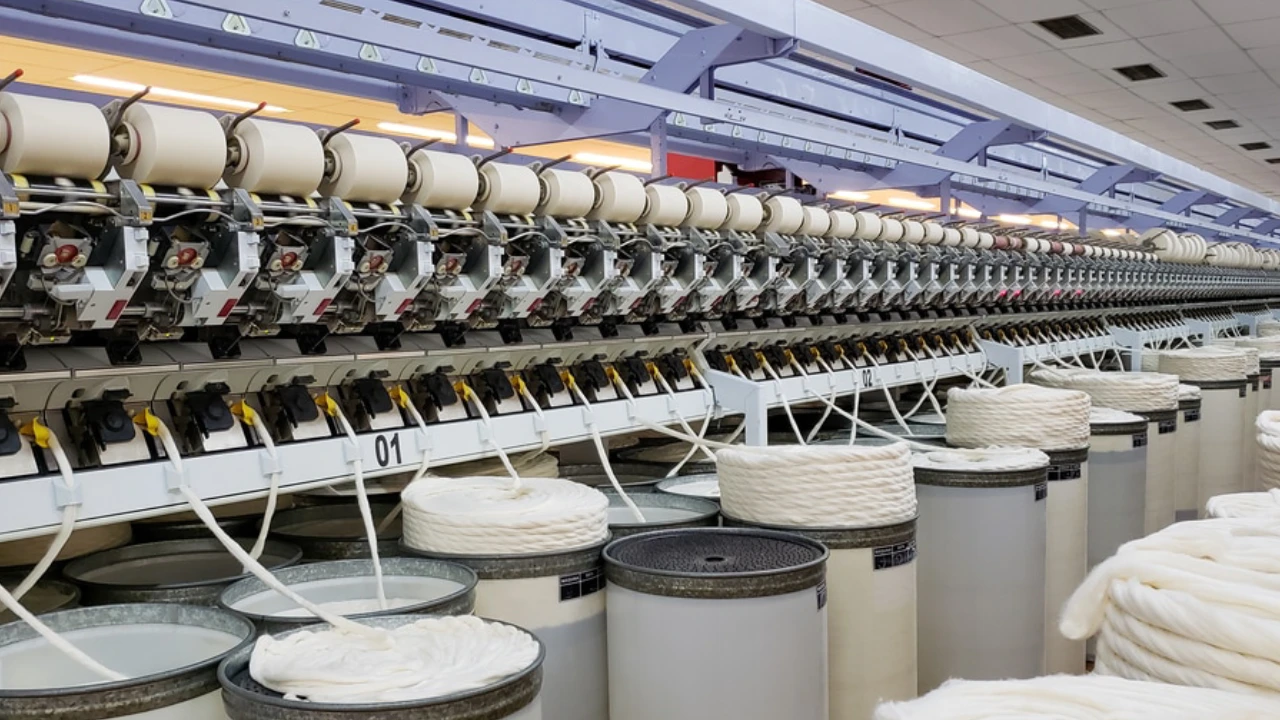Diethylene Glycol (DEG) in Textiles: A Key Player in Fabric Finishing

Introduction
In the dynamic world of textile manufacturing, achieving the perfect balance of softness, durability, and performance is a cornerstone of quality. The journey from raw yarn to finished fabric relies heavily on advanced fabric finishing techniques, where chemical auxiliaries play a transformative role. One such versatile player is Diethylene glycol (DEG), a key ingredient that elevates the quality and functionality of textiles. From enhancing moisture-wicking properties to improving dye uptake, DEG’s role in the textile finishing process is both innovative and indispensable.
This article delves into the multifaceted applications of Diethylene Glycol in Textiles, exploring its benefits, mechanisms, and the best practices for its sustainable use in modern fabric treatment. Whether you’re a textile engineer, a product developer, or a sustainability advocate, understanding DEG’s contributions can refine your approach to creating high-performance fabrics.
What Is Diethylene Glycol (DEG) in Textile Manufacturing?
Diethylene glycol (DEG) is a colorless, odorless, and hygroscopic liquid belonging to the glycol family. Its chemical structure, which includes an ether linkage, makes it more hydrophilic and less volatile than its cousin, ethylene glycol. In the context of industrial textile production, DEG is prized as a humectant, solvent, and plasticizing agent.
Its low toxicity profile (when handled according to safety guidelines) and excellent solvency power for dyes and resins make it a go-to choice in formulating textile chemical auxiliaries. According to standards from the American Association of Textile Chemists and Colorists (AATCC), DEG’s ability to absorb ambient moisture is particularly valuable for maintaining consistent humidity during processing.
Key properties that make DEG effective in textiles and fabric finishing include:
-
High Boiling Point (245°C), making it stable in high-temperature dyeing and heat-setting processes.
-
Water Solubility, allowing for seamless integration into aqueous finishing baths.
-
Low Freezing Point (-10°C), which prevents crystallization in storage and ensures easy handling.
Primary Applications of DEG in Textile Finishing
DEG‘s versatility shines across various stages of fabric production, but its most critical impact is felt during the finishing phases. Here’s a breakdown of its common applications:
1. Softening and Fiber Conditioning
As a core component in fabric softeners, DEG acts as a plasticizer and lubricant. It penetrates fiber structures—such as cotton, polyester, and their blends—reducing inter-fiber friction and imparting a supple, luxurious hand feel. Studies in the Journal of Textile Science & Engineering indicate that DEG-based softeners can enhance fabric pliability by up to 20%, a critical factor for products like premium bed linens and comfortable apparel.
2. Dyeing and Printing Auxiliaries
Achieving uniform color is a primary goal in textile dyeing, and DEG serves as an effective dye leveling agent. It moderates the migration of dye molecules, preventing patchiness and ensuring even shade development. In reactive dyeing for cellulosic fibers, it helps stabilize the dye bath and improves color fastness. Furthermore, in digital printing inks, DEG’s role as a humectant prevents nozzle clogging, ensuring sharp, high-definition prints on various fabrics.
3. Moisture Management and Anti-Static Finishes
For performance-oriented apparel, moisture management is non-negotiable. DEG’s hygroscopic nature makes it ideal for hydrophilic finishes that draw sweat away from the skin, enhancing evaporation and comfort. Additionally, its polarity helps dissipate static charge in synthetic fibers like nylon and polyester, reducing cling and improving wearability.
4. Resin and Cross-Linking Formulations
In the production of durable press and wrinkle-resistant fabrics, DEG is used as a co-solvent in cross-linking resins. It ensures uniform distribution of the resin on the fabric, leading to consistent performance and improved crease recovery without excessive stiffening.
Benefits of Using DEG in Sustainable Fabric Finishing
Incorporating DEG into textile processing offers several tangible advantages that align with both performance and ecological goals:
-
Cost-Effectiveness: Its multi-functionality can reduce the need for multiple specialized additives, streamlining the chemical processing pipeline and lowering production costs.
-
Eco-Friendly Profile: DEG is readily biodegradable under aerobic conditions, which supports certifications like OEKO-TEX Standard 100 and aligns with the principles of green chemistry in textiles.
-
Fiber Versatility: It is effective on a wide range of natural and synthetic fibers, making it a versatile tool for mills working with diverse materials.
-
Enhanced Durability: By improving abrasion resistance and color retention, DEG-treated fabrics enjoy a longer lifespan, contributing to waste reduction—a key tenet of sustainable textile production.
Safety and Best Practices for DEG Handling
While DEG is a valuable auxiliary, responsible handling is paramount. At high concentrations, it can potentially lead to fabric yellowing or residue buildup if not properly rinsed. From a workplace safety perspective, while it has a lower toxicity profile than some glycols, prolonged exposure should be avoided. Adherence to OSHA guidelines (50 ppm TWA) is essential.
To ensure safe and effective use:
-
Conduct small-scale trials to optimize dosage (typically 1-5% in finishing baths).
-
Implement robust effluent treatment systems to prevent environmental contamination.
-
Source high-purity DEG to avoid contaminants like ethylene glycol, as emphasized by regulations like EU REACH.
The Future of DEG in Smart and Sustainable Textiles
The role of Diethylene Glycol in textiles is evolving with the industry’s shift towards a circular economy. Emerging trends include:
-
Bio-based DEG for more sustainable finishing formulations.
-
Smart Textiles: Using DEG’s hygroscopic properties to develop humidity-responsive fabrics for adaptive wear.
-
Nanotechnology: Employing DEG as a stabilizer for nanoparticles that provide UV protection or antimicrobial properties on textiles.
By leveraging DEG’s properties thoughtfully, manufacturers can continue to innovate, creating superior fabrics that meet the growing consumer demand for comfort, performance, and environmental responsibility.
FAQ: Frequently Asked Questions
DEG is highly valuable in technical textiles and performance wear due to its multi-functional nature. Key benefits include:
-
Enhanced Comfort: Improves moisture management through hydrophilic finishes.
-
Durability: Acts as a co-solvent in resin finishes for wrinkle and crease resistance.
-
Processing Aid: Serves as a dye leveling agent and humectant for consistent, high-quality results on functional fabrics.
DEG’s profile supports certain sustainable textile production goals. It is biodegradable and can be used efficiently in minimal doses, reducing waste. Its role in enhancing durability and color fastness also extends garment life. For specific eco-textile certifications like GOTS, manufacturers should consult the standard’s guidelines, as the focus is increasingly on bio-based alternatives and green chemistry principles.
While both are important textile chemical auxiliaries, they serve distinct primary functions:
-
As a Softening Agent: DEG acts as a plasticizer, penetrating fibers to reduce friction and improve the fabric’s hand feel (softness and drape).
-
As a Humectant: DEG focuses on water retention, aiding in processing (like dyeing) or enhancing the fabric’s inherent moisture-wicking capabilities for performance wear.
As a humectant, DEG’s key role is moisture management. Its hygroscopic properties allow it to absorb and retain water from the air. This is critical in:
-
Textile Printing: Prevents ink from drying and clogging printheads, ensuring sharp, consistent designs.
-
Dyeing Processes: Helps maintain a consistent dye bath viscosity, promoting even color absorption and preventing patchy results.
Yes, when used in accordance with industry safety standards, DEG is safe for textile applications. In the fabric finishing process, it is incorporated into formulations that are typically rinsed from the fabric, leaving minimal residue. The safety of the final product is often verified by global textile certifications, such as OEKO-TEX Standard 100, which tests for harmful substances to ensure consumer safety.

